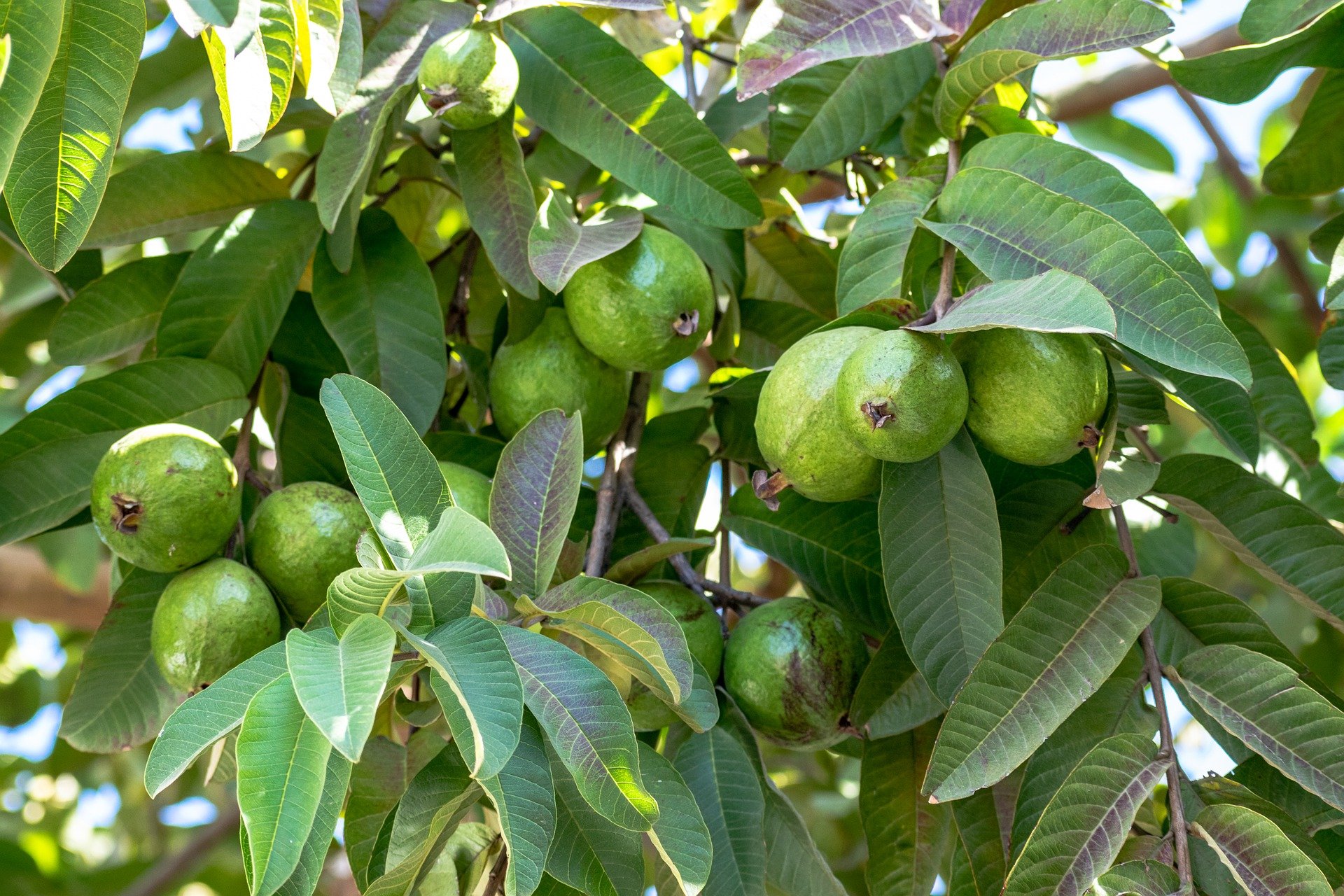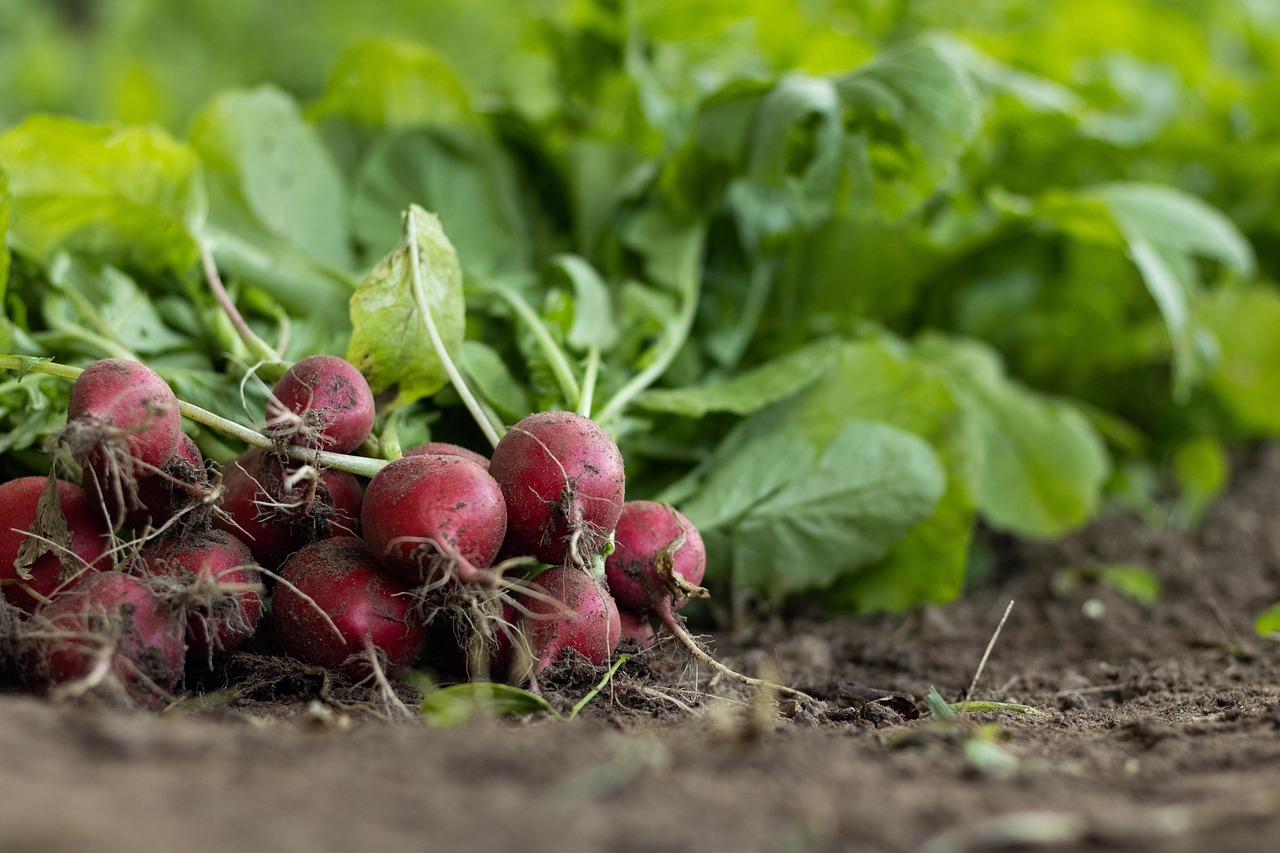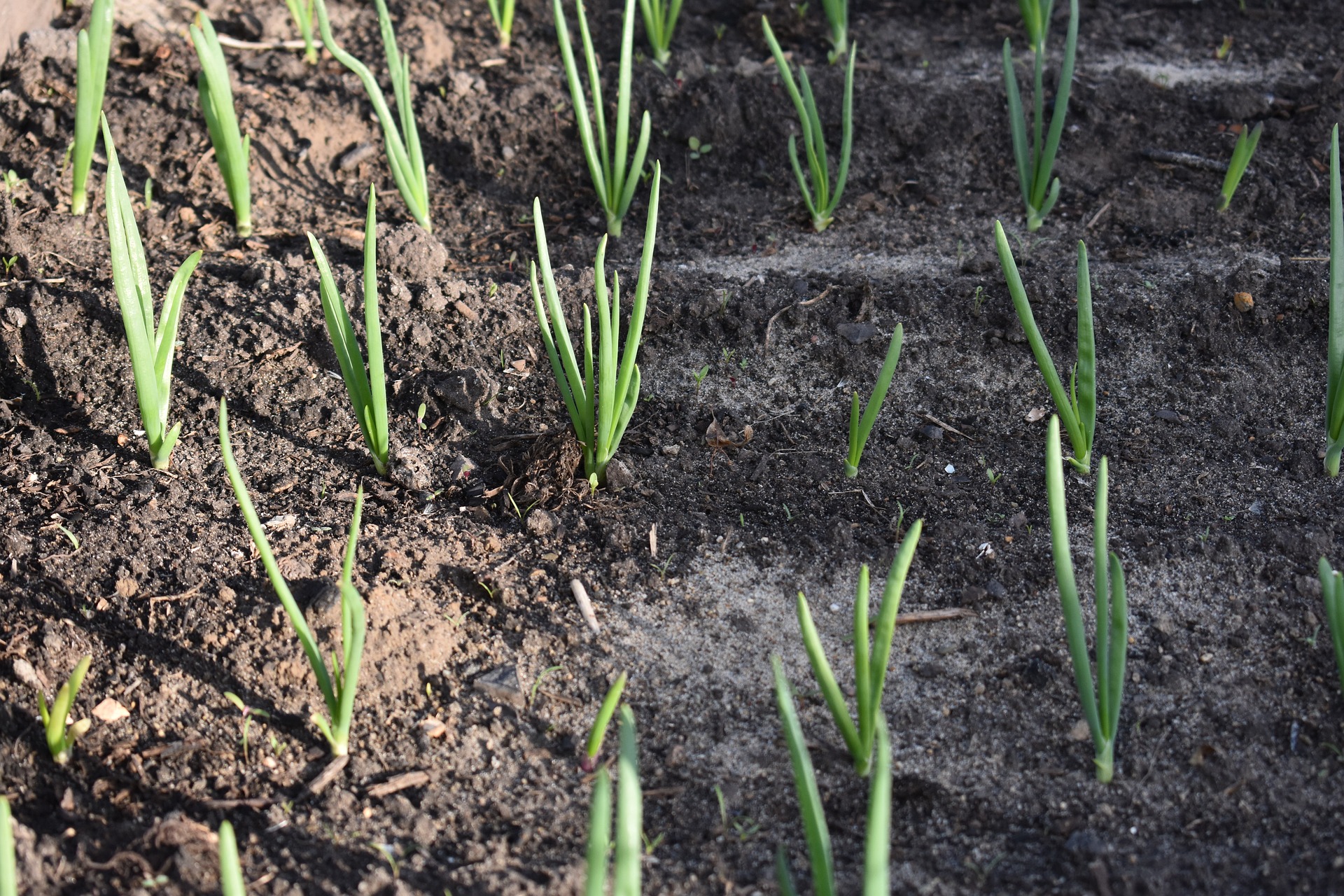As a hedgerow, part of an orchard or planted in the back or front yard of a home, a guava tree is a valuable addition to a tropical landscape. The whole tree (stems, leave, flowers and fruits) is colorful and beautiful to look at, making it perfect for ornamental purposes.
Guava fruits are delicious with a sweet and musky flavor and taste like a combination of strawberry and pear and are full of vitamins.
Description
Guava is a medium sized tropical shrub or tree belonging to the myrtle family Myrtacea and native to Tropical America. The plant is adapted to growing in tropical and subtropical regions of the world where it is mainly grown for its edible fruits and as an ornamental plant.
Guava fruits are round or oval in shape depending on species, with a coarse green outer cover before ripening. Guava flesh turns to pale pink, deep pink or white on ripening depending on species and the skin becomes soft with light green, yellow or pink color.
Guava fruits are rich in vitamins A, B and C and are eaten fresh or made into punch, jams, jellies, marmalades and other products.
Scientific name: Psidium guajava
Common name: Guava
Mature plant height: 9-30ft
Sun requirements: Full sun
Native area: Tropical America
Guava tree varieties recommended for growing at home
Hong Kong produces sweet fruits with pink flesh color.
Crystal produces white-fleshed fruits with mild sweet taste, which are eaten when almost crunchy.
Patilo produces tangy fruits with pink flesh.
Asian white produces white-fleshed fruits with mildly tangy taste, eaten when almost ripe and crunchy.
Homestead produces sweet tasting fruits with pink flesh.
Climatic requirements
Guava trees are adapted to growing in warm tropical and subtropical climatic conditions with optimum growth occurring between 230C-280C. Drought conditions and freezing temperatures can cause growth to slow down or cease. Temperatures between -20C to -30C can kill young trees.
Site selection
Soil requirements: Guava trees are adapted to growing in a wide range of soils but will grow optimally in rich clay loam or sandy loam soil that is well drained.
Sun requirements: Guava trees should be grown in a sunny location. Sunlight is required during flowering and fruit formation. The site should also be sheltered from strong winds.
Propagation of Guava trees
Guava trees are propagated by seeds, cuttings, air layering, grafting or budding. Trees planted from seeds may produce fruits that have different characteristics from those of the mother plant.
Fruit production begins 2 to 4 years after planting.
Planting trees
Select healthy plants (seedlings) that are free from disease from a certified nursery.
Dig a hole that is big enough to accommodate the root zone of the plant. Mix some soil with compost or rotted animal manure and put it in the hole. Ensure that the planting hole is 5-8 m away from buildings, powerlines and other trees. Planting too close to these structures will cause shading and lead to production of fewer smaller fruits.
Place the seedling in the hole, hold it upright and backfill with soil. Ensure that the plant is firm in the ground. Water thoroughly and mulch around the seedling to retain moisture.
Care and maintenance
Watering
Water the tree when it is still young whenever it does not rain. After the tree has become firm, you can reduce watering to once or twice a week and when it has matured, it is not necessary to water. Resume watering when the tree is flowering and also during fruit formation to enhance formation of big fruits.
Mulching
Mulch the plant using a 2–5-inch layer of mulch in form of bark, wood chips, dried grass or some other mulching material. Mulching helps retain water in the soil, control weed growth and rotted mulch releases nutrients to the plant.
Fertilizing
Fertilize young trees every two months with an all-purpose fertilizer or compost manure until the tree gets established.
Lawn care
If your tree(s) is located in your lawn, ensure that it is kept from grass about 5 or more ft. away to prevent trunk injuries caused by lawn mowing equipment. Trunk injuries cause the tree to weaken and become less productive.
Pruning
When a guava tree has grown to height of 1-2ft, prune the tree to induce branching. Allow 3 to 4 lateral buds to grow on the tree during the first year and further remove the tips to induce more branching when they have reached about 25-35 inches in length.
Keep mature trees at a short height (3 to 6ft) through pruning, and do not allow the tree to grow so big as it is likely to topple over in areas with strong winds.
Harvesting and storage of fruits
Harvest guava fruits when they have developed yellow skin color but are quite firm. Store them in a cool dry place and they will ripen between 2 to 5 days at room temperature. Do not leave guavas to fully ripen on the tree as ripe guavas are favorites of birds and insects.
White-fleshed guava can be picked from the tree when fruits are mature and the skin color is green to light -green if it is intended to be eaten fresh.

Pests and diseases
Pests include guava moth, nematodes, Caribbean fruit fly, guava whitefly, thrips and scales.
Control: Use proper management practices e.g. mulching, proper spacing between trees and spraying using appropriate pesticides.
Common diseases include anthracnose and red alga.
Control: Pruning trees to allow aeration, spraying with appropriate fungicides.




